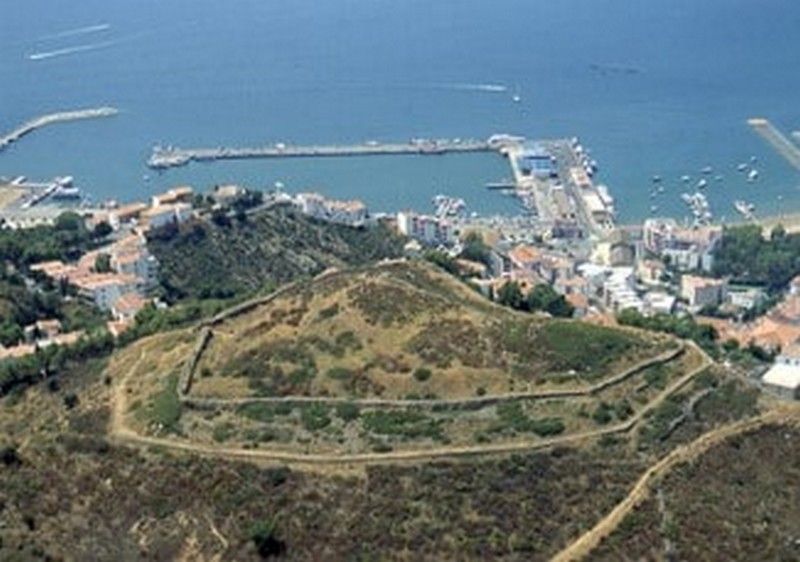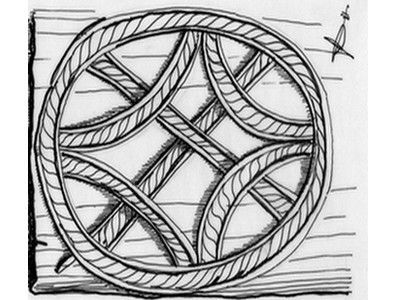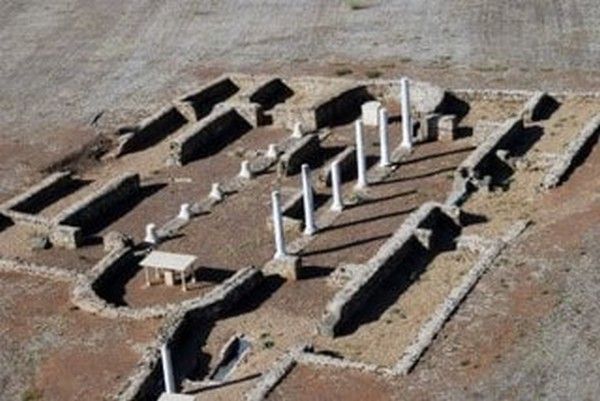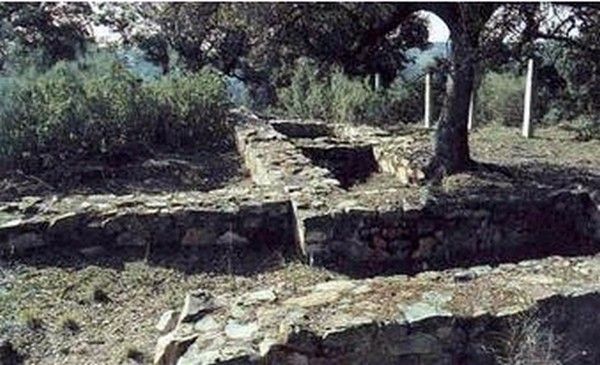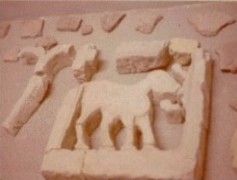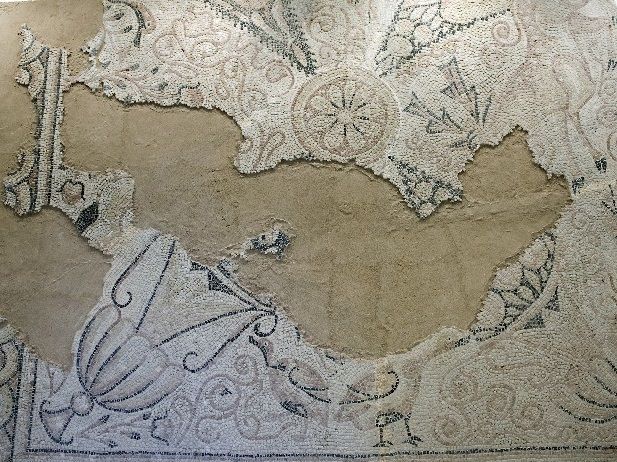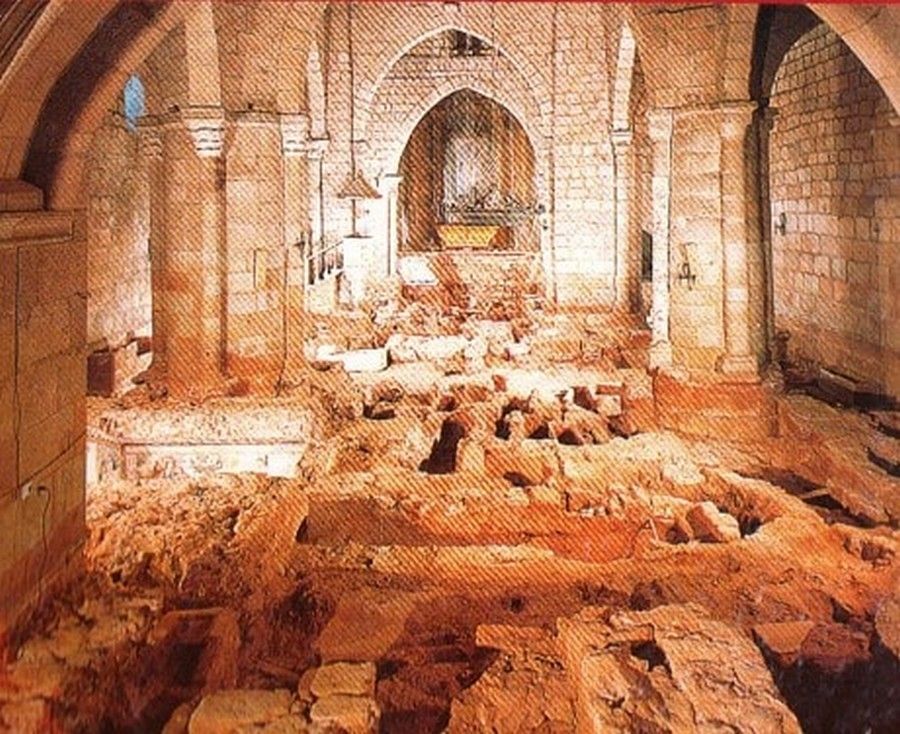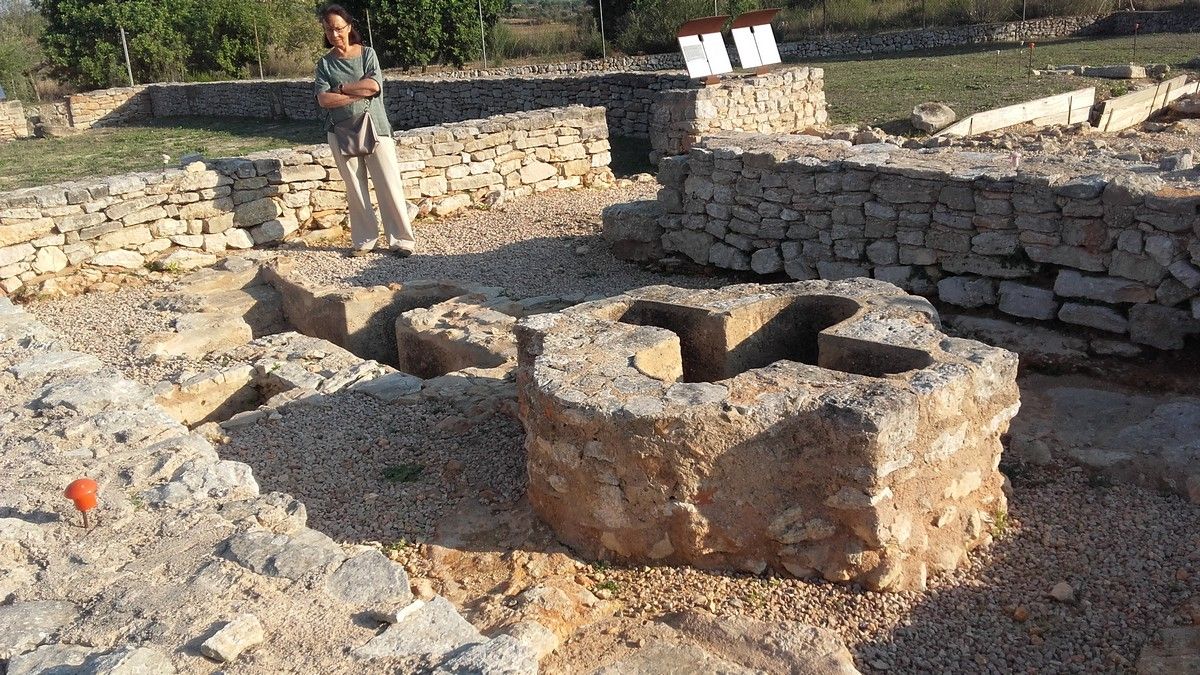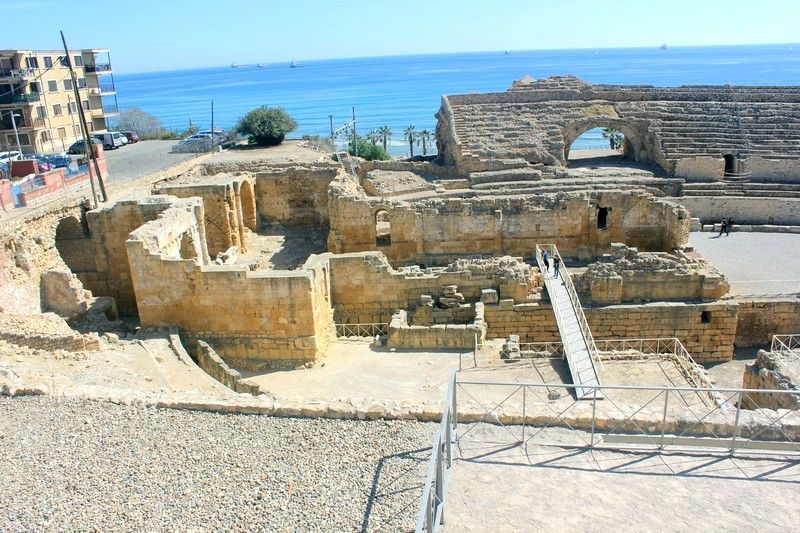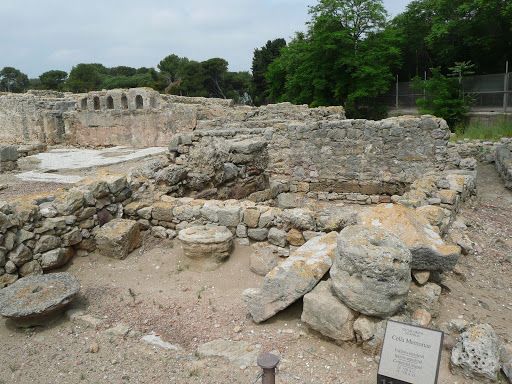Index of files of monuments
ARCO DE SAN JUÁN DE PANJÓN
Visigoth - 7th Century - Pontevedra
Unknown until 1926 when it was discovered under several layers of lime, situated as an arch of access to the presbytery in the ancient church of San Juan, on which the “Votive Temple of the Sea” was built between 1932 and 1937. There is no previous reference to the church from which this magnificent preromanic arch was conserved, which links with the wide set of horseshoe arches that exist in Galicia.
ASENTAMIENTO FORTIFICADO DE PUIG ROM
Visigoth - 7th Century - Gerona
At the top of a small peak near the sea called Puig de les Muralles are located the archaeological remains of an old fortified settlement which, due to its characteristics, has traditionally been identified as a military structure –castrum–, although it has also been interpreted as as a civilian town in height. The chronology attributed is from the 7th century, and so far no later chrono-typological element has been identified, so it is very likely that the place was abandoned after the Muslim occupation at the beginning of the 8th century (the latest element is a Agila II tremis). It has been tried to relate this fortified enclosure as one of the military agents of the rebellion of Doge Paul against King Wamba (a. 672); in fact, the site constitutes a paradigm among the settlements of Visigothic chronology in the northeast of the peninsula.
BAPTISTERIO DE GABIA LA GRANDE
Visigoth - 6th Century - Granada
Semi buried building, almost square, with an octogonal font in white marmor in its centre, covered with a media sphere vault and with an apse, a tower with a spiral staircase and a long access gallery. The whole decoration found suggests it was built during the first Byzantine domination of this part of Spain.
Basílica de Algezares
Visigoth - 6th Century - Murcia
Also called Basílica del Llano del Olivar, it has a basilica plan with three naves separated by arches on columns and a single extended semicircular apse. It had an attached circular baptistery, with a round pool. The construction technique is very poor but remains of richly decorated gates with geometric drawings, columns with secant circles, roped pilasters, etc. have been found.
BASÍLICA DE CABEZA DE GRIEGO
Visigoth - 6th Century - Cuenca
Remains of the largest Visigothic church ever known have been found in the ruins of the Roman city of Segóbriga It was of basilical type with an elongated pseudo crossing with the shape of “tau”. It was dismantled during the restoration of the Monastey of Uclés and only the studies of the excavation in the 18th century and a few remnants of the decoration have survived.
Basílica de Casa Herrera
Visigoth - 6th Century - Badajoz
t has a square basilical plan of 15 metres by side with three naves separated by six columns and two opposed apses, both unattached, with prolonged semicircular shape. It was totally surounded by a set of small compartments that suggest it was built by African monks.
BASÍLICA DE EIO (Tolmo de Minateda)
Visigoth - 6th Century - Albacete
Rests of an Iberian and Roman city have been excavated in a plateau in Hellín. It was built at the end of the 6th century and beginnings of the 7th century. It included a large three nave basilic with lateral compartments on the chevet and a baptistry at its feet. The whole surrounding is becoming an archeological park that it is expected to be open to the public by the end of 2008.
Basílica de El Germo
Visigoth - 6th Century - Córdoba
It has a basilical plan of 19 x 13 m, with three naves separted by rectangular supports and two opposed apses that connect on the southern side with another extended building, also with a double apse that contained an oval baptismal font. There was also a lateral portico in the northern side. It seems it was further used after the Arab invasion.
BASÍLICA DE FORNÀS DE TORELLÓ
Visigoth - 5th Century - Baleares
It has a basilica plan measuring 18 x 6 m, with a nave that continues in a square apse, separated by a wide opening. The most interesting thing about this monument are the mosaics that were found in it: a rectangle around the altar space and a krater with a peacock on each side in the presbytery decorated with grapes and birds, two lions facing each other with a palm tree in the middle. in the sanctuary and geometric motifs in the nave.
BASILICA DE LA ALCUDIA
Visigoth - 6th Century - Alicante
Excavated in 1905 in Alcúdia de Elche, it has also been considered as a sinagogue of the 4th century. It consists of an apse nave of 11 x 8 m facing from east to west and paved with mosaics in blue, white, pink and yellow. Almost the whole decoration of the nave, divided by friezes in three decorative sections, is geometrical and floral with Greek inscriptions.
BASILICA DE LA ISLA DEL REY
Visigoth - 6th Century - Baleares
Very similar to Torrello’s with a basilical plan with three naves and a square apse with two small lateral compartments. Here also the most interesting thing are the mosaics, very naturalist and fanciful, with drawings of flowers, plants and animals. Part of those have been preserved in the basilic an specially in the Museum of Mahón.
BASÍLICA DE SAN APOLINAR EL NUEVO
6th Century -
During the 6th century, the city of Ravenna was the most representative focus of the artistic evolution of Christian art. And one of the most important buildings of the time was the Basilica of San Apollinaris Nuevo, a paradigm of proto-Byzantine art in the West with a basilica plan with three naves separated by arches on columns, a portico and a free-standing tower, circular in plan,
BASILICA DE SANTA EULALIA
Visigoth - 5th Century - Badajoz
The church of Santa Eulalia is one of the monumental spaces most loved by the people of Merit, the temple and the Martyr, its patron saint, are part of the daily life of the residents of the city. In 1990, the ecclesiastical authorities decided to carry out works to improve and refurbish the historic building, works that lasted until 1992. In order to comply with the work and heritage regulations, as well as to understand the history of the place in depth, archaeological excavations of the site were undertaken. inside the building until exhausting all the secrets kept underground financed by the General Directorate of Heritage of the Junta de Extremadura. Despite the enormous difficulties of an intervention such as the one proposed and the complexity inherent in a complex archaeological record, the project was a success in every way. Part of the information obtained can be appreciated in the interpretive space created and in the musealization of the excavated area.
Basílica de Son Bou
Visigoth - 5th Century - Baleares
A basilical plan with three naves and three apses, the central one with a nartex and two annexes. It seems it had an external baptistry that was later transferred to the left apse where there is a monolithical, cylindrical baptismal font with the shape of a cross. There was a door to each nave within the portico. No mosaics nor decoration have been found, but the construction is of great quality.
BASÍLICA DE SON PERETÓ
Visigoth - 5th Century, 6th Century - Baleares
It has a basilical plan with three naves separated by a square central apse. The baptistry, with a four lobed baptismal font, was placed in front of the facade. From the rests of the decoration, the mosaics are remarkable for their quality and motifs: floral and geometrical, most certainly inspired in North African or Tarragona models.
Basílica de Torre de Palma
Visigoth - Siglo IV - Alto Alentejo
It consists of a building divided in two parts, each one with two opposed apses, one with three naves and the other one with just one that covers the complete width, where there is also an attached rectangular baptistry on the northern side with attached compartments. Obviously designed and built as an homogeneous ensemble.
BASÍLICA DE VEGA DE MAR
Visigoth - 6th Century - Málaga
BASILICA DEL ANFITEATRO DE TARRAGONA
Visigoth - 6th Century - Tarragona
Visigoth basilica built at the end of the sixth century inside the Roman amphitheatre of Tarragona, in memory of three martyrs burned there in 259. Discovered in 1953 under the remains of a Romanesque church from the 12th century, its foundations have been excavated and studied and it has been known that it had the shape of a late Romanesque basilica similar to that of Eio in the Tolmo de Minateda, of three naves, an apse and a chamber attached to the east of the north side, but all its sculpted decoration, patched in material of other previous buildings, was already in Visigoth style
BASILICA PALEOCRISTIANA DE AMPURIAS
Visigoth - 5th Century - Gerona
Church located in the center of an extensive cemetery (cella memoriae), with tombs also inside the temple and in the portico. It is a basilica construction with a double nave, with an apse that is semicircular on the inside and rectangular on the outside, leaving two small rooms between them. It has not been possible to determine if it is an early Christian basilica or an old building from the Roman period reused later.
Basílica Paleocristiana de Barcelona
Visigoth - 5th Century - Barcelona
Partially buried under the left side of the gothic cathedral, remains of an Early Christian cathedral and an octogonal baptistry have been excavated. From the building that faces northeast we only know a part of its three naves of very irregular shape where two sarcophagus and remnants of paintings in Roman style have been found.




